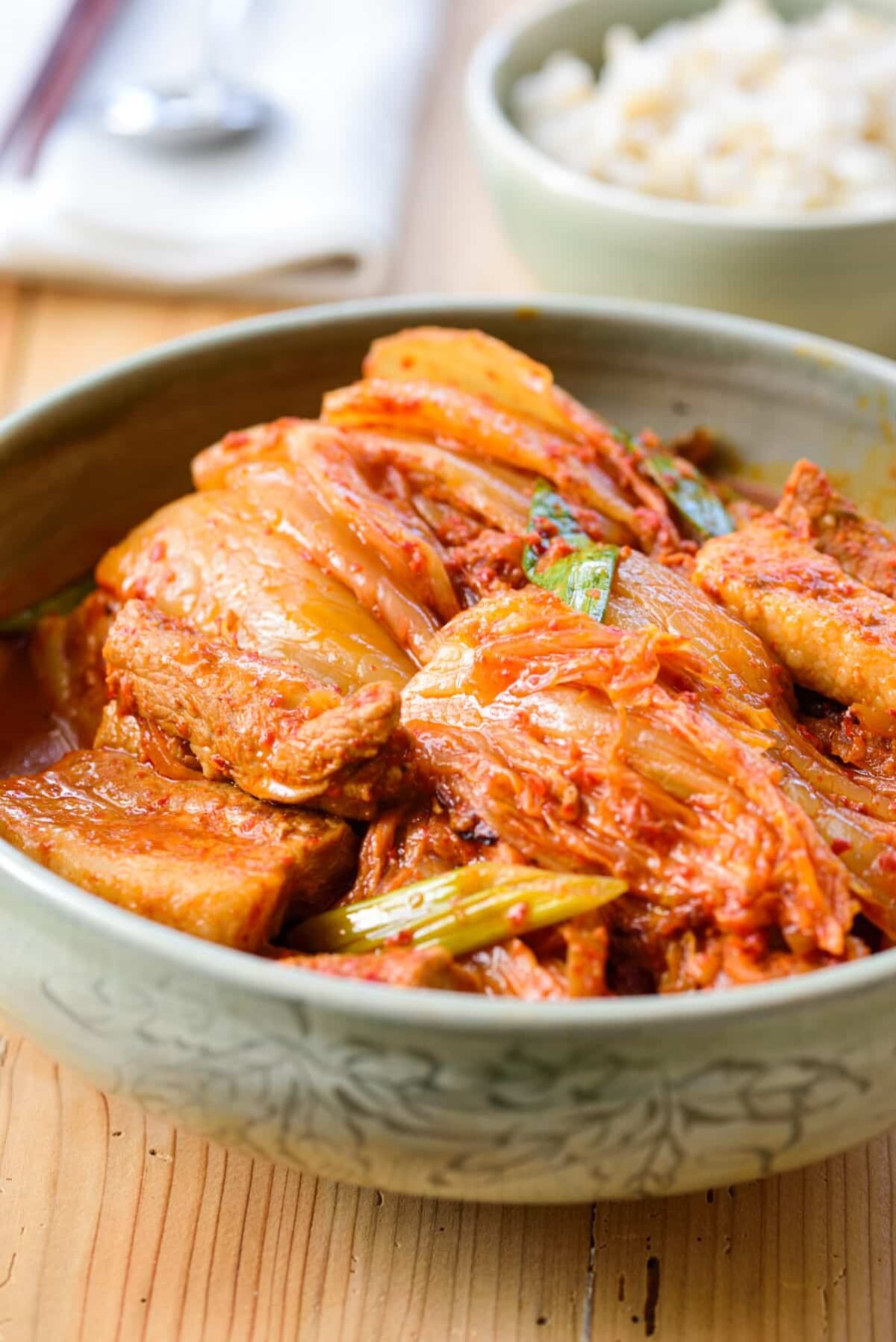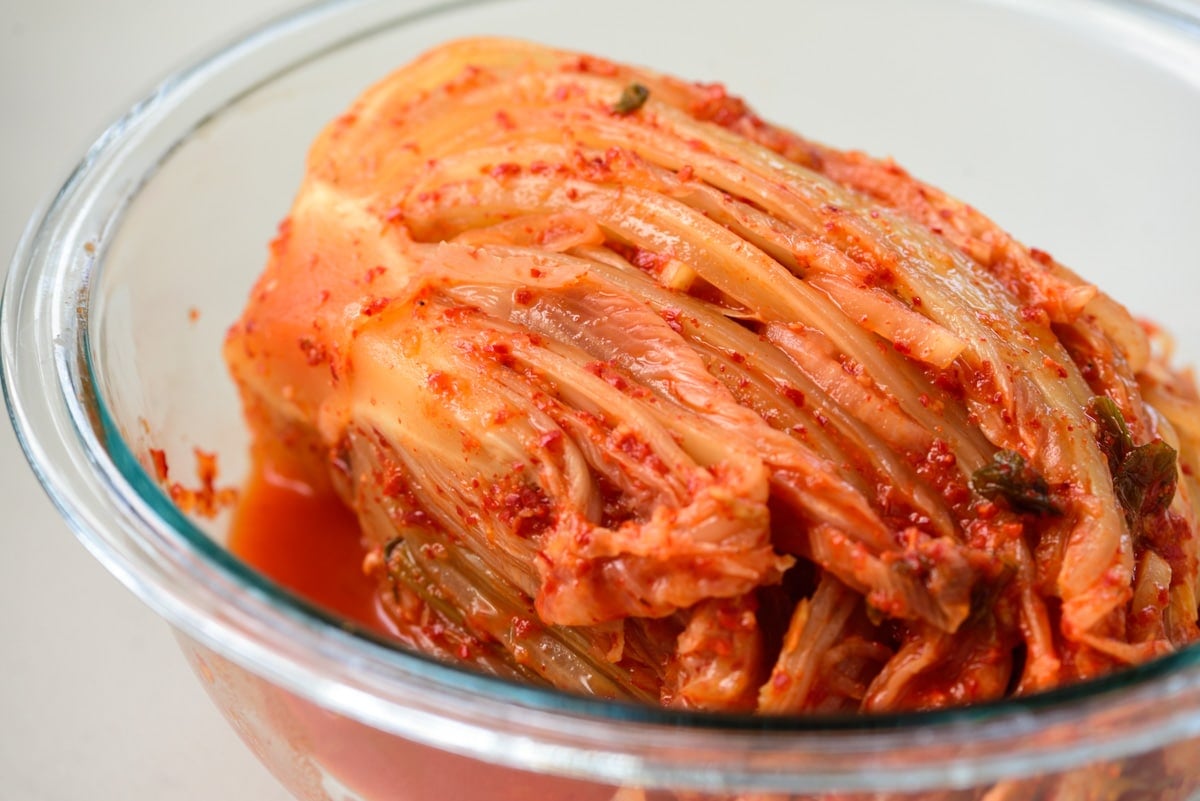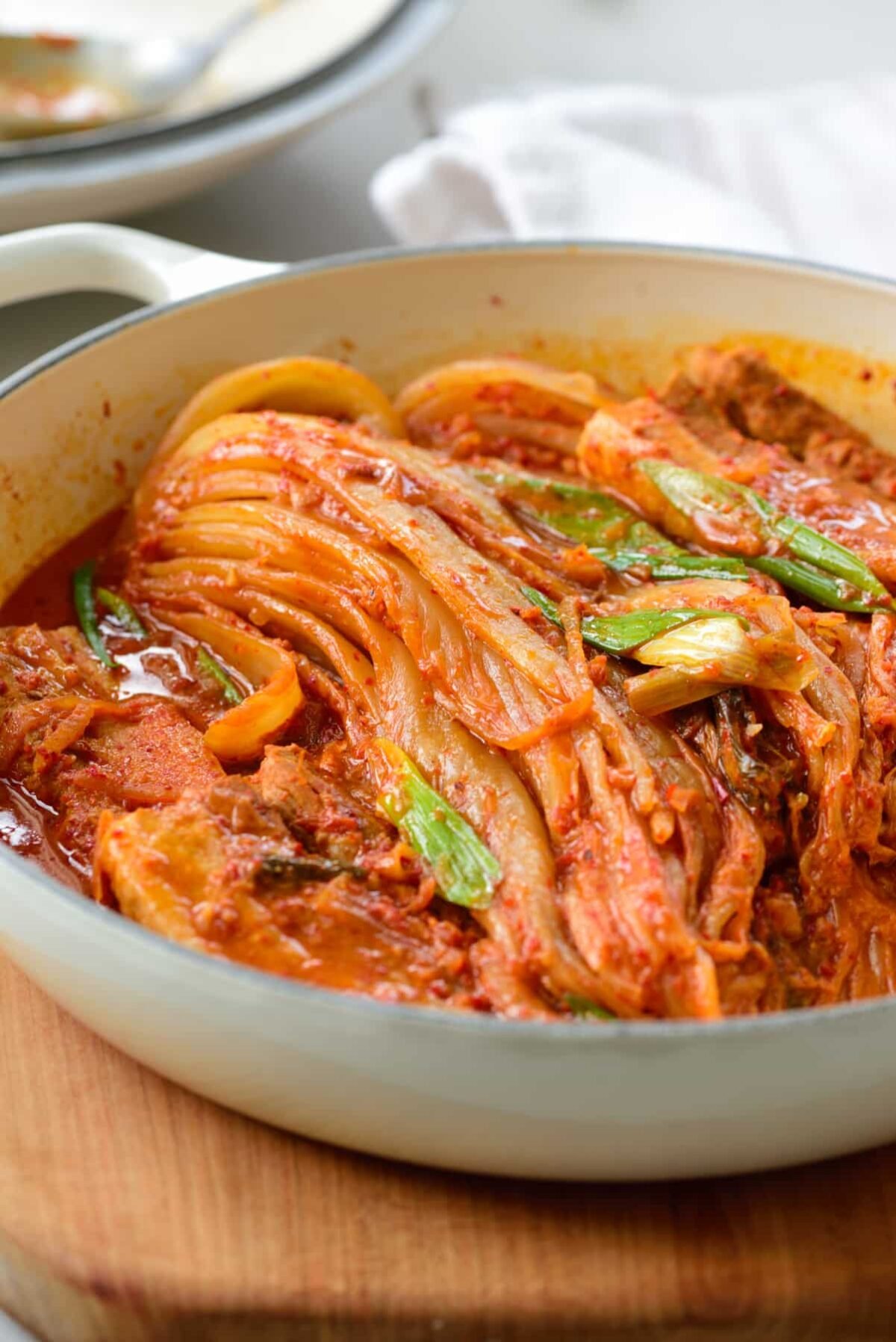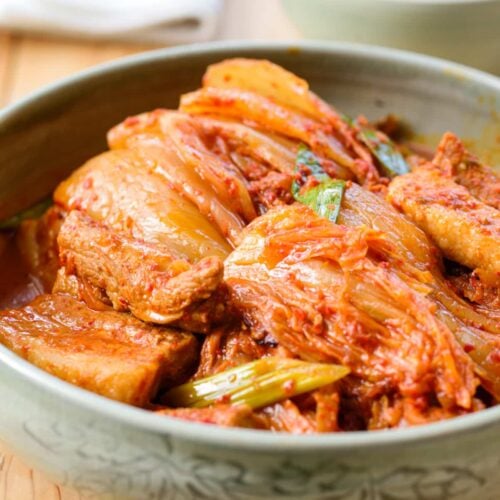If you like kimchi jjigae (stew), try this kimchi jjim (braised kimchi). Slow cooked with a small amount of liquid and fatty pork, braised kimchi is tender and packed with flavors.


Aged kimchi
Every year in late fall, I make enough kimchi to last through the winter and spring. After aging, the kimchi becomes sour and packs rich flavor, making it perfect for stews or soups! This kimchi jjim is a family favorite!
In Korea, mukeunji (묵은지), which is traditional poggi kimchi that has aged over at least a six-month period, is commonly used for this dish. The flavor of that old kimchi is quite intense. Some Korean restaurants offer mukeunji dishes such as mukenji jjim (pork-braised) and mukeunji godeungeo jorim (mackerel-braised).
Don’t worry! Your kimchi doesn’t need to be 6 months old for you to make this dish. However, it’s best to use well fermented kimchi that has turned sour. The older the better! If you don’t have homemade kimchi, your Korean market may carry commercially made poggi kimchi.


The meat
Fatty pork is the most popular meat choice for kimchi jjigae in Korea. As I always say, kimchi and fatty pork make a perfect pair. It’s no surprise pork ribs are common and delicious in kimchi stew. If using them, cook the ribs until they’re somewhat tender by boiling them for 20-30 minutes, and then cook them with kimchi.
Tips for making good kimchi jjim
- Old, sour kimchi is the best for this dish.
- Use the water used to rinse rice (ssalddeumul, 쌀뜨물) for the braising liquid. It’s commonly used for Korean stews. Use the water from the second or third round of rinsing. The rice water thickens the broth slightly and enhances the flavor of the braised kimchi. Otherwise Anchovy broth, chicken broth, milky bone broth or vegetable broth will also be great for this dish.
- If juice from kimchi is available, it will add lots of flavor to the broth.
- You can cut kimchi into small pieces before cooking, but in Korea it’s commonly made with the quarter cabbage intact as shown in the photo below and cut at the table.
- If the kimchi is overly sour, add a little sugar to the stew to balance out the sour taste. It rounds up the flavor nicely, but it’s not absolutely necessary if you don’t want to use sugar.


More recipes with old kimchi
For more Korean cooking inspirations, follow along on YouTube, Pinterest, Twitter, Facebookand Instagram.


Notes
A little bit of sugar to the stew balances out the sour taste of kimchi. It rounds up the flavor nicely, but it’s not absolutely necessary if you don’t want to use sugar.
This kimchi jjim recipe was originally posted in March 2013. I’ve updated here with new photos, more information, and minor improvements to the recipe.

